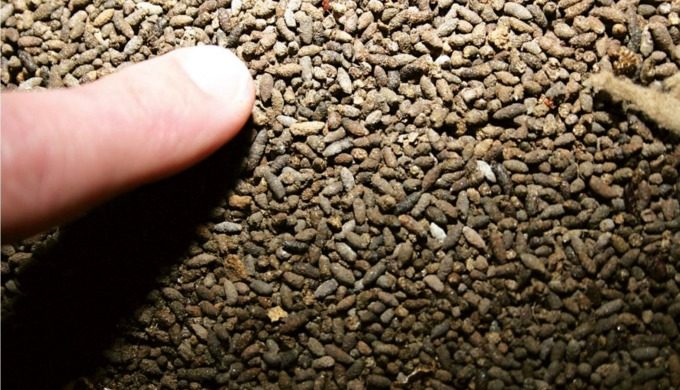At Bracken Cave, (located just twenty minutes from San Antonio) every night during the summer months, 15 to 20 million Mexican free-tailed bats emerge from the cave to fly about 60 miles away (reaching speeds as fast as 60 MPH) to feast on an agricultural nuisance – the corn earworm moth. These fascinating mammals make the Bracken Bat Colony the largest known bat colony in the world, as well as one of the largest concentration of mammals on earth.
The Bracken Bat Colony is considered a maternity colony because the bats who call Bracken their home are females who give birth to one pup a year. Male Mexican free-tailed bats live in much smaller “bachelor” colonies and don’t help raise their young. The bats, who migrate from Mexico every year, provide numerous important ecological benefits to the Hill Country agriculture and its ecosystem. For instance, they consume 147 tons of insects nightly. Considering that each bat only weighs about 10 grams (or as much as two quarters), they can eat more than twice their body weight in one evening.
Although the Mexican free-tailed bats are highly beneficial to our ecosystem, there are facts about them that aren’t for the faint of heart. Here are 5 facts about our Texas Hill Country bats that aren’t for the squeamish:
1. More Guano Than You “Wanna Know”
Photo: Facebook/BatCon
Mexican free-tailed bats are also known as “guano bats” for the amount of droppings that they produce. Sixty to seventy-five feet of bat guano lies in the bottom of Bracken Cave from years and years of bats occupying the cave. Researchers with Bat Conservation International hope for a core sample to be taken of the floor of the cave in the near future. The scientific benefits of analyzing such a column would be very important. Researchers could possibly use radiocarbon dating to establish the age of the oldest layers, which could reach back centuries or even millennia. DNA analysis could possibly identify any bat species that might have preceded today’s Mexican free-tailed bats and what insects the earlier bats were eating.
Photo: Flickr/Chris Vreeland
With fresh droppings and occasional dead bats falling to the floor in Bracken, dermestid beetles (also known as “flesh eating” beetles) begin to multiply. By mid-summer, their numbers can be truly astronomical, causing the floor surface of the cave to be in constant, seething motion with dermestids scurrying about looking for food. Young bats falling to the floor can be skeletonized in minutes, serving to feed the beetle population as well as to clean up the joint.
3. Predators Lying in Wait
Photo: Flickr/Tom Spinker
Although it’s difficult to think about, the Bracken Bat Colony also serves as a food source for many predators in the area. As the sun begins to set at the cave and the swirling vortex of bats inside get closer and closer to the exit, visitors witness snakes and hawks making their way closer. Also commonly found biding their time until the bats emerge are raccoons and skunks, as well as great horned owls, later in the evening. The western coachwhip snake blends in flawlessly with the limestone around the entrance of the cave and often takes advantage of downed and stunned bats, who’ve landed on the rocks below. Red-shouldered and Swainson’s hawks fly overhead, screaming and diving into the vortex of bats to grab a quick meal.
4. A Balmy, Steamy, Guano-Fueled Baby Incubator
Photo: Facebook/BatCon
The temperature inside of Bracken Cave is a balmy and steamy 102-104 degrees, largely in part to the guano and the concentration of tightly-packed bats. Bat pups are often stacked 500 pups per square foot of cave space. The heat inside of the cave makes for an ideal “incubator” for Mexican free-tailed bat pups, who are both hairless and pink. The heat of the cave allows them to focus all of their energy on nursing and growing, instead of regulating body temperature.
People often react negatively when asked how they feel about bats. They are among the most misunderstood of animals – routinely feared and thought to be disease-carrying menaces. But, it’s clear that bats play an important role in our ecosystem and rarely harm humans. Researchers at Bat Conservation International work tirelessly to educate the public on this underappreciated and threatened mammal. If you’re interested in visiting the Bracken Cave to see the bats in action, become a member of Bat Conservation International. Your membership helps the organization to protect important bat colonies in Texas and all over the world.







